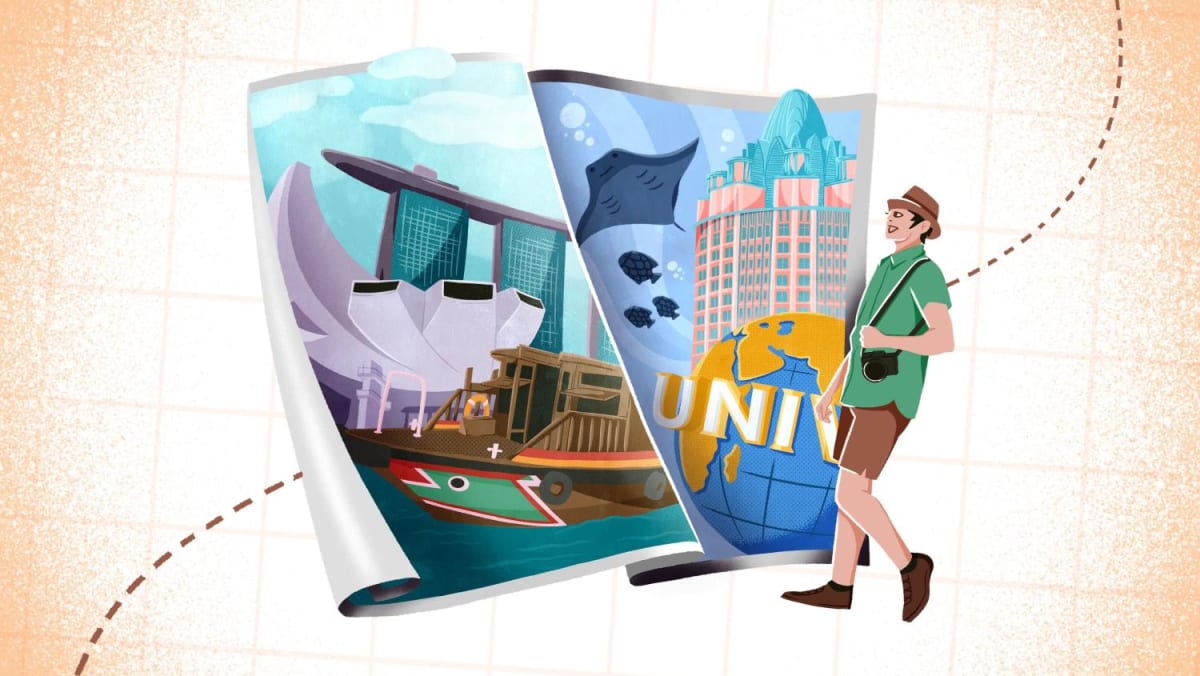
Each week, TODAY’s long-running Big Read series delves into the trends and issues that matter. This week, we look at how Singapore’s tourism sector looks set to recover to pre-pandemic levels and how the country can better attract tourists beyond building new attractions. This is a shortened version of the full feature, which can be found here.
Singapore’s tourism arrival is set to return to pre-pandemic levels by 2024, after receiving more than 1 million visitors in March 2023 aloneBut the pandemic has changed tourism patterns, including a preference for single-destination holidays and increasing interest in eco-tourismSingapore’s integrated resorts — touted as a “gamechanger” when they opened in 2010 — are also set to face increased competition as Japan and Thailand start plans to build their own resortsFor Singapore to stay relevant and continue drawing tourists, the answer does not lie in building another major attraction, said expertsRather, packaging attractions together and marketing Singapore better will be key to shedding the country’s image as a layover destination and getting travellers to stay here longer
SINGAPORE — While the humidity and heat may have bathed them in sweat, Australians Bryan and Christine Mansfield were smiling as they made their way to the Gardens by the Bay on Thursday (May 4).
Their three-day holiday in Singapore marked the start of their golden jubilee celebrations — one that had been delayed by the Covid-19 pandemic.
“Singapore is always a layover stop for Australians looking to travel. The flights were cheaper than if we went straight to Bali, so we finally took the opportunity to stay here and travel,” said Mr Mansfield, who is in his 70s.
The couple are headed to Bali on Sunday before returning home Down Under.
Like other tourists who spoke to TODAY, Singapore was their first foreign destination since 2020 when the Covid-19 pandemic ground international travel to a halt.
However, the island is but a layover for them before they head to their main destinations, mostly within the Southeast Asian region.
WHY IT MATTERS?
Tourists such as the Mansfields are flocking back to Singapore a year after it reopened its borders and relaxed its Covid-19 restrictions. Amid increasing visitor arrivals, industry experts are predicting that tourist numbers will reach pre-pandemic levels by end-2024.
In the first quarter of this year, Singapore had 2.91 million visitor arrivals, with 1.02 million visitors in March alone.
Experts predict tourist arrivals this year will likely be between 12 million and 14 million, surpassing 2022’s 6.31 million figure but still below the record 19.1 million who visited Singapore in 2019.
However, the average length of stay in the first quarter of this year is 3.97 days, just slightly higher than 2019’s average of 3.36.
THE BOTTOM LINE
The solution to drawing more tourists here and getting them to stay longer lies not in building another IR or major attraction, especially given the constraints of Singapore’s small size, said tourism experts.
Rather, Singapore needs to promote itself better, package attractions together and ensure that its offerings provide visitors with a good experience that keeps the country on the list of the world’s top destinations.
This would also entail consistently refreshing and enhancing existing attractions.
Citing Bird Paradise — the upgraded former Jurong Bird Park — which is set to open on May 8 with much fanfare as an example, they said that this will keep tourists coming to Singapore again to see what are its latest offerings.
The two IRs here — Marina Bay Sands and Resorts World Sentosa — which were dubbed gamechangers when they opened in 2010 to much fanfare, have also committed a total of S$9 billion investment into upgrading non-gaming facilities.
In exchange, the Government has granted both integrated resorts exclusivity for their casinos up till end-2030.
Dr Kevin Cheong, managing partner at Syntegrate, a tourism and destination development consultancy, said that two IRs could also do more to better integrate themselves with neighbouring stakeholders.
“Resorts World Sentosa can be even more integrated with Sentosa, VivoCity and in the future, the Pulau Brani precinct (also known as the Greater Southern Waterfront) as a holistic destination; and, Marina Bay Sands, together with the Central Business District, Gardens by The Bay and Marina Bay, can work as an integrated multi-dimensional destination.”
This could create a more encompassing destination, which if packaged well, can encourage tourists to stay longer and to indulge in these different destinations within Singapore, Dr Cheong added.